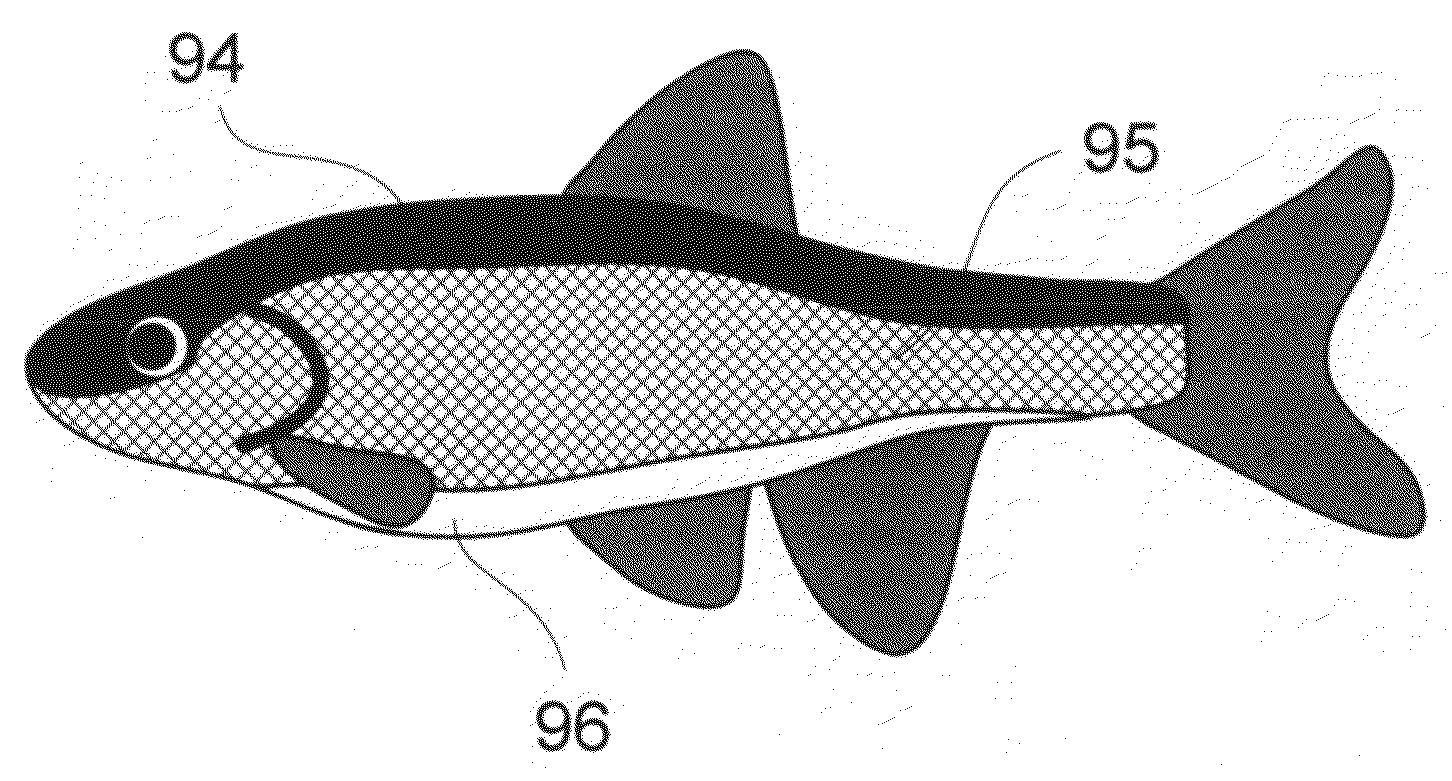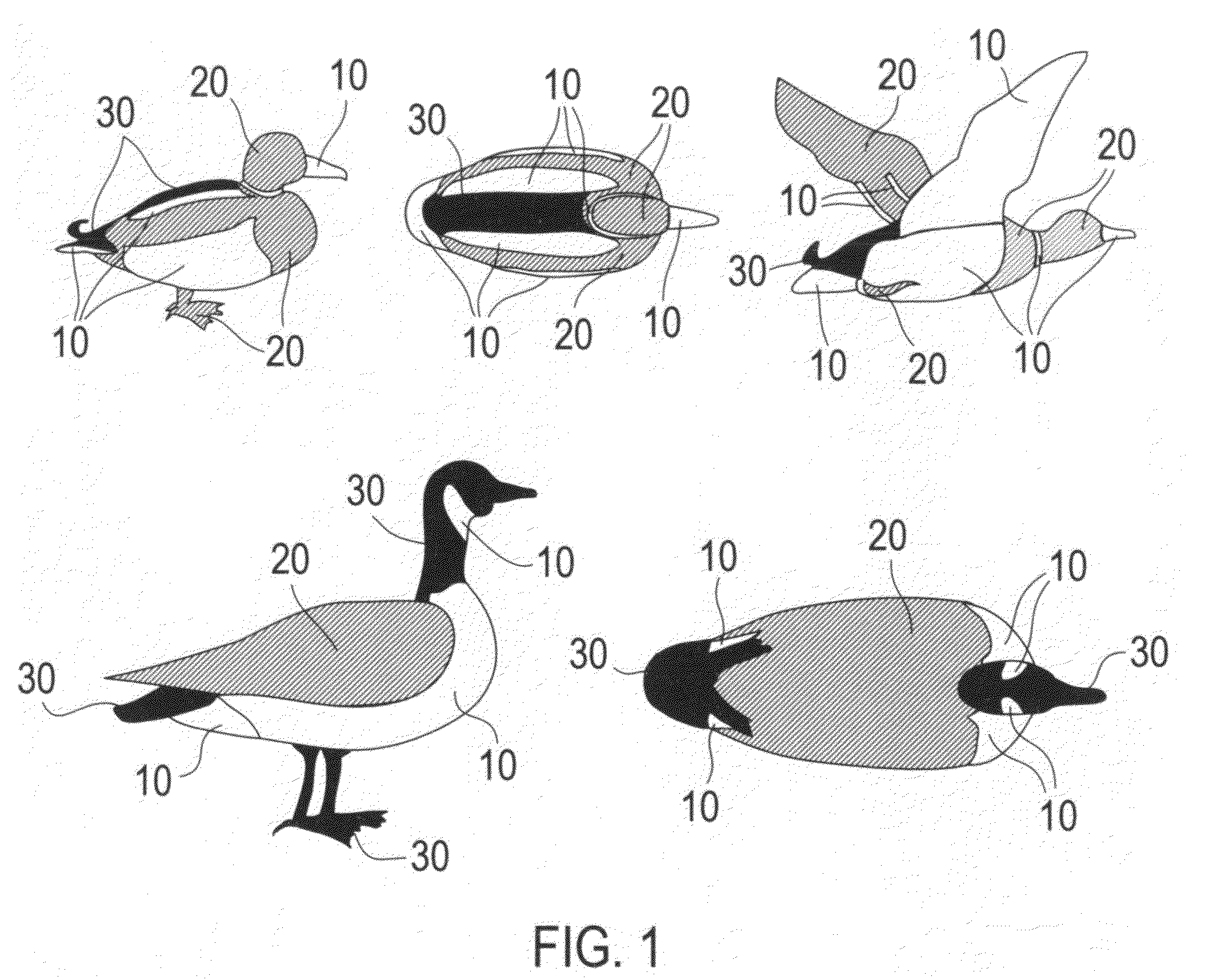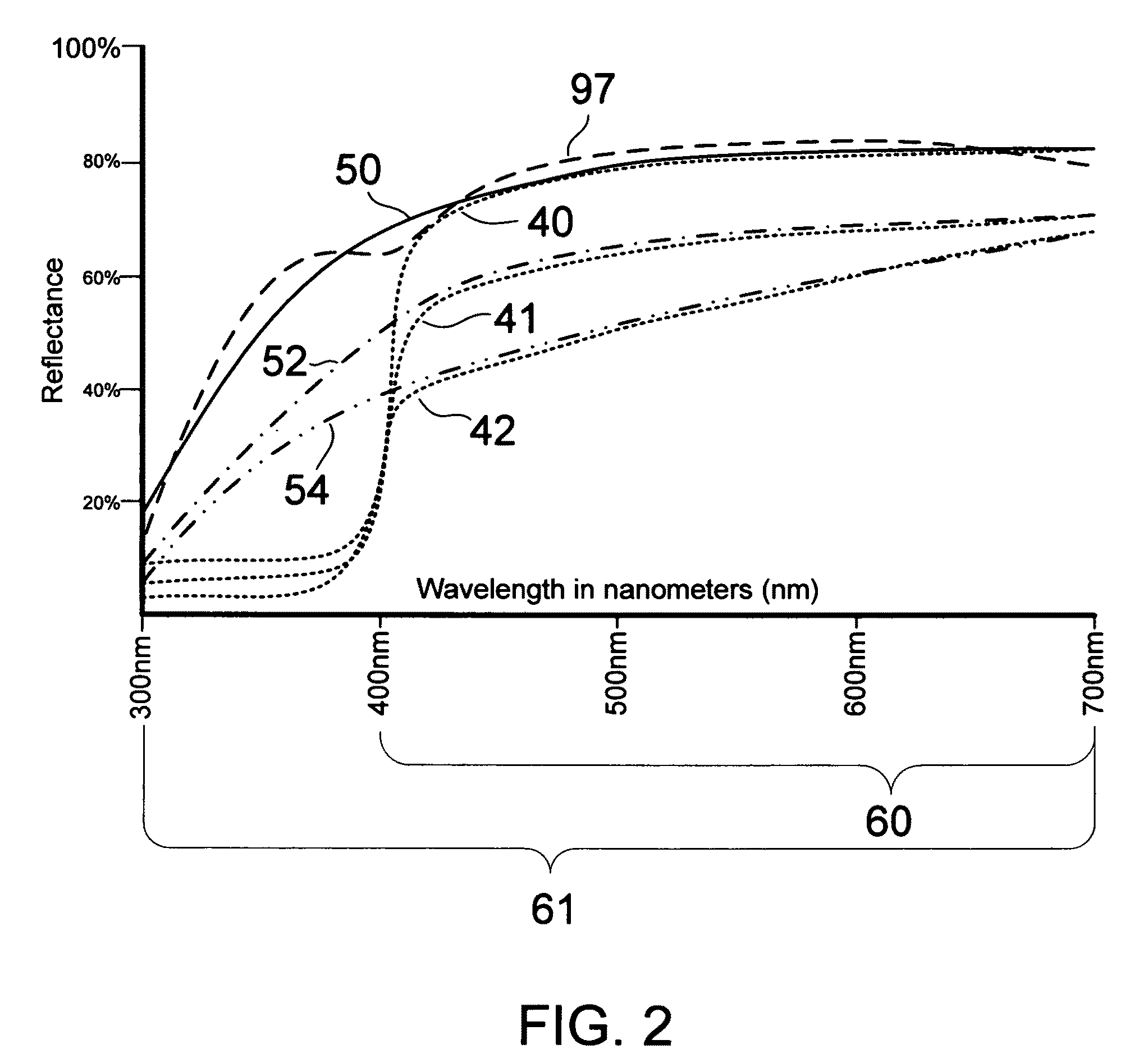Decoy or fishing lure exhibiting realistic spectral reflectance
a technology of spectral reflectance and lure, which is applied in the field of lures with realistic spectral reflectance, can solve the problems of not understanding the science correctly, not making the conceptual leap necessary, and lures, however, do not teach whether uv should be absorbed or reflected, or whether it is “good, and art does not teach how to determine the natural uv reflection of bait fish
- Summary
- Abstract
- Description
- Claims
- Application Information
AI Technical Summary
Benefits of technology
Problems solved by technology
Method used
Image
Examples
Embodiment Construction
[0044]It must be understood that, just as the human-visible colors present on an animal vary greatly over the surface of that animal, the ultraviolet (UV) light reflected from the surface of that animal can also vary greatly. A human-visible color such as the green found on the head of a drake mallard duck is simply a set of reflected wavelengths of light that falls within the spectrum of light visible to humans; specifically, it is wavelengths of light that humans perceive as the color green (for illustration purposes only we ignore the iridescent “angle-dependant” nature of these feathers). Depending on the exact wavelength and intensity of the reflected light, the color “green” may range in appearance from blue-green to yellow-green. Similarly, the amount of UV light, as well as the specific wavelengths of UV light, reflected from the surface of an animal can vary greatly, creating different “colors” of UV light. Although these UV colors are not visible to humans, they are visibl...
PUM
 Login to View More
Login to View More Abstract
Description
Claims
Application Information
 Login to View More
Login to View More - Generate Ideas
- Intellectual Property
- Life Sciences
- Materials
- Tech Scout
- Unparalleled Data Quality
- Higher Quality Content
- 60% Fewer Hallucinations
Browse by: Latest US Patents, China's latest patents, Technical Efficacy Thesaurus, Application Domain, Technology Topic, Popular Technical Reports.
© 2025 PatSnap. All rights reserved.Legal|Privacy policy|Modern Slavery Act Transparency Statement|Sitemap|About US| Contact US: help@patsnap.com



